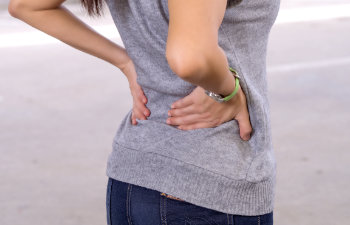
Low back pain is a common condition that affects millions of people worldwide, often caused by lumbar spinal stenosis (LSS), a narrowing of the spinal canal in the lower back. Lumbar spinal stenosis can lead to symptoms such as pain, numbness, tingling and weakness in the lower back, buttocks and legs, making everyday activities challenging and reducing quality of life. While traditional treatments for LSS may include medication, physical therapy and surgery, many patients seek alternative options that offer effective symptom relief with minimal invasiveness. One such option is Minimally Invasive Lumbar Decompression (MILD®), a revolutionary procedure that addresses the underlying causes of LSS and provides lasting relief for patients, available through Full Range Spine & Ortho clinics in the Los Angeles, CA, area.
What is Minimally Invasive Lumbar Decompression?
MILD® is a minimally invasive procedure designed to treat lumbar spinal stenosis by removing excess bone and tissue that contribute to spinal canal narrowing. Unlike traditional open surgery, which requires large incisions and significant tissue disruption, MILD® is performed using small instruments guided by advanced imaging technology, such as fluoroscopy or ultrasound. This allows the surgeon to precisely target and decompress the affected areas of the spine while minimizing damage to surrounding tissues and muscles.
During the MILD® procedure, the surgeon creates a small incision in the lower back and inserts a specialized device called the mild® device, which is used to remove excess bone and tissue from the spinal canal. By carefully removing obstructions and restoring adequate space within the spinal canal, MILD® helps alleviate pressure on the spinal nerves and relieve symptoms associated with lumbar spinal stenosis, such as pain, numbness, and weakness.
Benefits of MILD® for LSS
One of the key benefits of MILD® is its minimally invasive nature, which results in less postoperative pain, scarring, and recovery time compared to traditional open surgery. Many patients are able to return home the same day as the procedure and resume normal activities within a few days. Additionally, MILD® is performed under local anesthesia or mild sedation, reducing the risks associated with general anesthesia and allowing for a faster and smoother recovery.
Another advantage of MILD® is its high success rate in providing long-lasting symptom relief for patients with lumbar spinal stenosis. Clinical studies have shown that the majority of patients experience significant improvement in pain, mobility and quality of life following MILD® treatment. Unlike conservative therapies, which may only provide temporary relief or mask symptoms, MILD® addresses the underlying causes of LLS and provides lasting results for eligible patients.
In addition to its effectiveness in relieving symptoms, MILD® offers several other advantages for patients with lumbar spinal stenosis. The procedure is performed on an outpatient basis, eliminating the need for a hospital stay and reducing healthcare costs associated with traditional surgery. MILD® also preserves the structural integrity of the spine, minimizing the risk of complications such as instability or spinal deformity that may occur with more invasive procedures.
Minimally Invasive Lumbar Decompression (MILD®) is a safe, effective and minimally invasive treatment option for patients suffering from symptoms of lumbar spinal stenosis. By precisely targeting and decompressing the affected areas of the spine, MILD® provides lasting relief from pain, numbness and weakness, allowing patients to regain their mobility and quality of life. If you are experiencing symptoms of LLS, contact our team at Full Range Spine & Ortho in the greater Los Angeles, CA, metro area to determine if MILD® may be the right treatment option for you.
Posted on behalf of FullRange Spine & Ortho